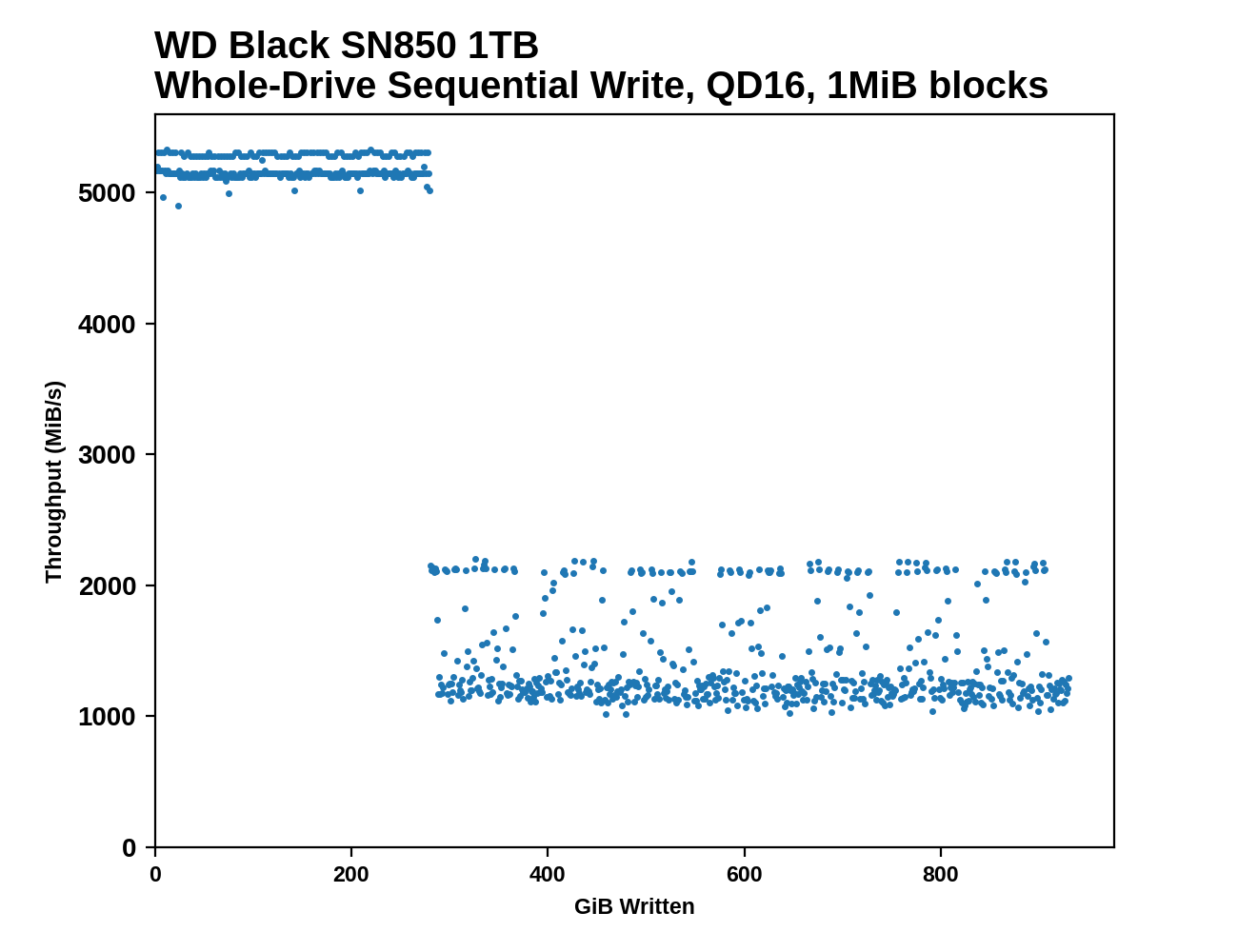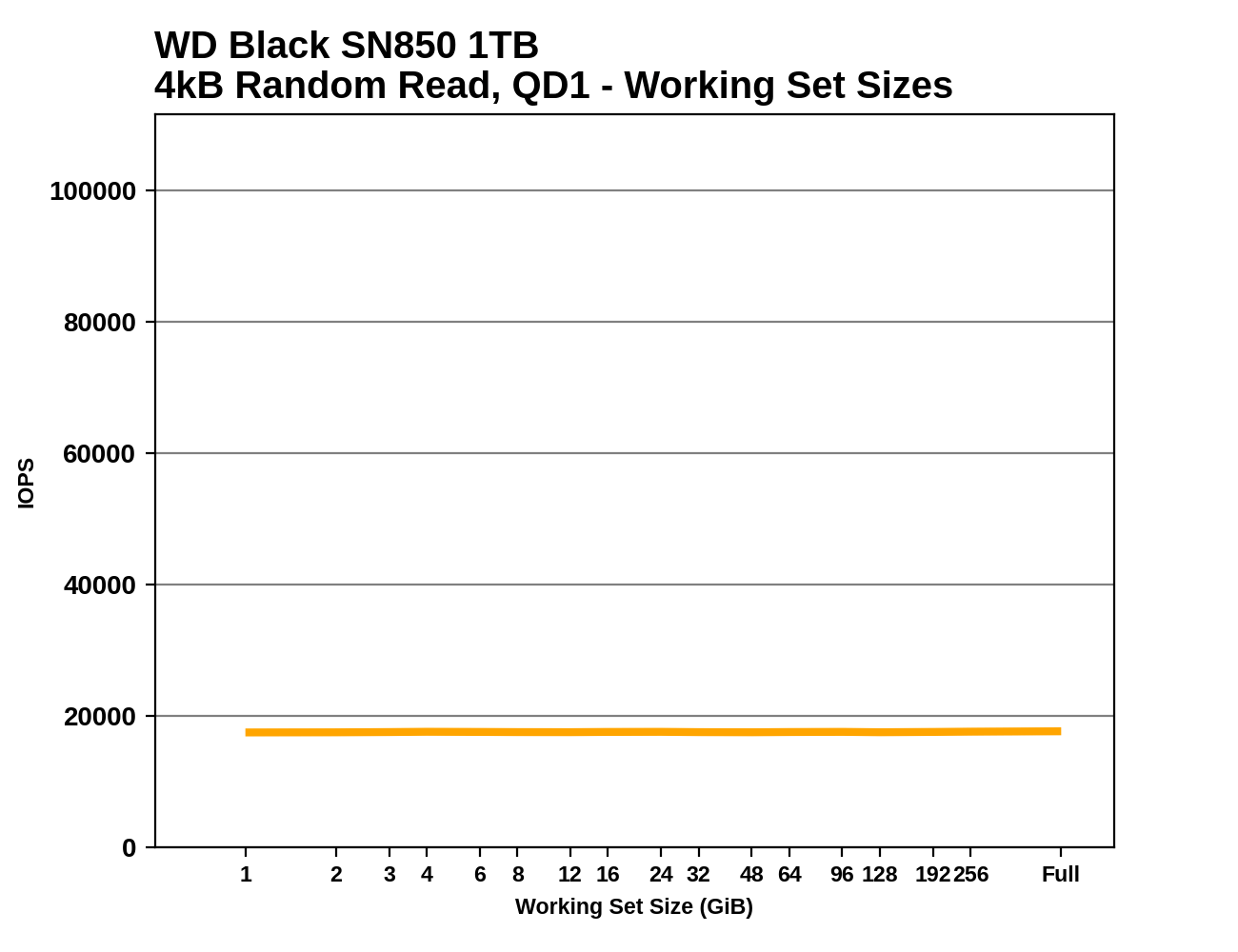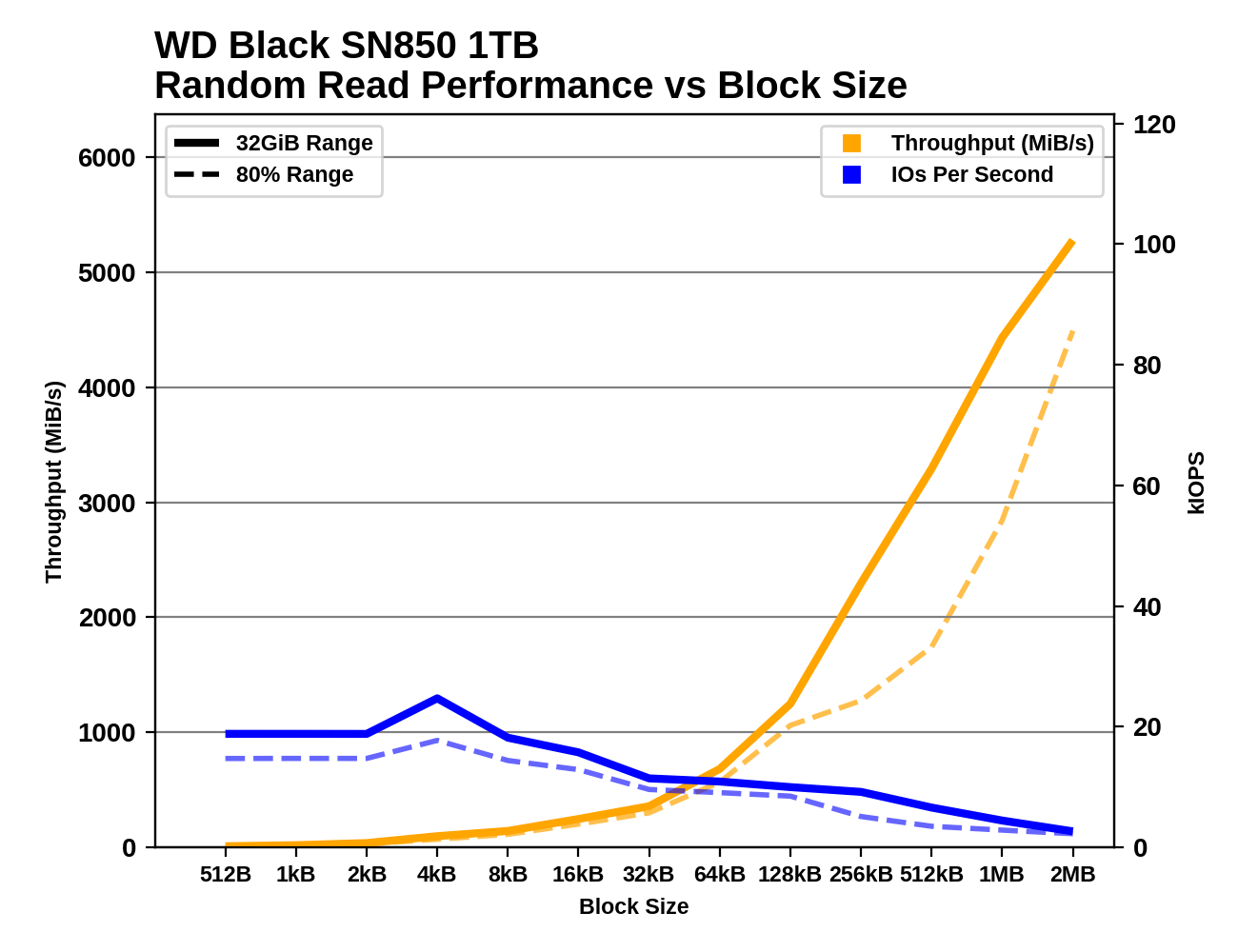The Western Digital WD Black SN850 Review: A Very Fast PCIe 4.0 SSD
by Billy Tallis on March 18, 2021 12:50 PM ESTAdvanced Synthetic Tests
Our benchmark suite includes a variety of tests that are less about replicating any real-world IO patterns, and more about exposing the inner workings of a drive with narrowly-focused tests. Many of these tests will show exaggerated differences between drives, and for the most part that should not be taken as a sign that one drive will be drastically faster for real-world usage. These tests are about satisfying curiosity, and are not good measures of overall drive performance. For more details, please see the overview of our 2021 Consumer SSD Benchmark Suite.
Whole-Drive Fill
 |
|||||||||
| Pass 1 | |||||||||
| Pass 2 | |||||||||
On the first pass starting from an empty drive, the WD Black SN850's SLC cache handles sequential writes at a bit over 5GB/s and the cache lasts for about 281GB before running out. That's a very large SLC cache size for a TLC drive, which is probably why performance is so variable after the cache is full. For the second pass of sequential writes, the cache size has been reduced to about 20GB, but the drive shows a second burst of 20GB of SLC-speed writes later in the test.
 |
|||||||||
| Average Throughput for last 16 GB | Overall Average Throughput | ||||||||
The aggressive SLC caching behavior on the SN850 comes at the cost of slower and less-consistent post-cache write performance, but Western Digital's earlier WD Black SSDs already behaved quite well here. The SN850 manages to keep write speed from ever dropping below 1GB/s, and the overall average across the entire drive fill is basically the same as the SN730, the OEM relative to the SN750 but with the same newer flash as the SN850.
On the second sequential write pass when the SN850's variable-size SLC cache is already at its smallest, post-cache performance is extremely consistent and faster than any other TLC SSD we have tested, but still 15% slower than the MLC-based Samsung 970 PRO.
Working Set Size
 |
|||||||||
Most high-end drives have boring and steady results on this test since they don't skimp on DRAM. The QD1 random read latency for the SN850 is better than any other TLC drive we've tested, and only 4% slower than the MLC-based Samsung 970 PRO.
Performance vs Block Size
 |
|||||||||
| Random Read | |||||||||
| Random Write | |||||||||
| Sequential Read | |||||||||
| Sequential Write | |||||||||
The WD Black SN850 is strongly optimized for 4kB IOs, with lower IOPS and throughput for sub-4kB block sizes on all four workloads. None of the other drives show such broad preferences for 4kB block sizes, but some of Western Digital's drives and a few others show this behavior on at least some of the workloads. This tuning pays off in some places, such as the SN850's leading random write performance for small block sizes (which is followed by the SLC cache running out while testing larger block random writes). There are some other weaknesses including poor performance for small-block sequential reads, but more importantly it has great performance for sequential reads with larger block sizes.










83 Comments
View All Comments
Unashamed_unoriginal_username_x86 - Thursday, March 18, 2021 - link
Answer is no but he's mentioned it earlier in the comment section"As I mentioned in the article, my first Phison E18 drive arrived yesterday and I don't have complete results yet. But the first batch of results is in Bench:"
https://www.anandtech.com/bench/product/2732?vs=27...
James5mith - Saturday, March 20, 2021 - link
Nah, I'm just a big fan. Like others here though, I wish I also had a 905p for my OS drive due to the sheer performance. But for a bulk data drive, the Sabrent 4 Plus has been awesome.Everytime though these PCIe 4.0 drives come out though, nothing can beat the performance of the 905p unless you are talking raw sequential numbers.
Tomatotech - Thursday, March 18, 2021 - link
Nice review! It’s amazing to see how fast SSDs are developing - I well remember the pain of running everything off HDDs. What’s even more impressive is there seems to be no natural limit in sight for SSD speeds - it feels like peak speeds are doubling around every 18 months.Makaveli - Thursday, March 18, 2021 - link
Peak Sequential speeds are doubling, however there are still other area's to improve on.cx1983 - Thursday, March 18, 2021 - link
I failed to see why did you put the Optane 905P drive in the mix... It's a $2,500 enterprise drive in the middle of ~$200 costumer drives. It's like throwing in a Xeon Scalable/Epyc when benchmarking a Core i7/Ryzen 7. All it does is distort the graphs, making it harder to see how the drives fare against each other.It would only make sense if you were writing an article comparing costumer grade hardware vs enterprise grade hardware.
Billy Tallis - Thursday, March 18, 2021 - link
The Optane 905P is technically a consumer/enthusiast drive. The enterprise version is the P4800X, which doesn't have RGB LEDs. I included the 905P because it is somewhat relevant when discussing the fastest consumer drives that money can buy, but I left out the power consumption data because that would have distorted all of those graphs.Slash3 - Thursday, March 18, 2021 - link
Power Consumption: YesBilly Tallis - Friday, March 19, 2021 - link
Pretty much. On the old test suite, I measured it as 7.3W idle, 8.5W for QD1 random read, up to 17.1W for sequential writes (2.2GiB/s). I'm really curious to see if second-gen 3DXP in the P5800X improves on that.Hifihedgehog - Friday, March 19, 2021 - link
Unlimited... POWER!MDD1963 - Thursday, March 18, 2021 - link
About 4 years ago, it took X99 and three 950 Pros in RAID 0 to allow 1M IOPS...; this is quite impressive!